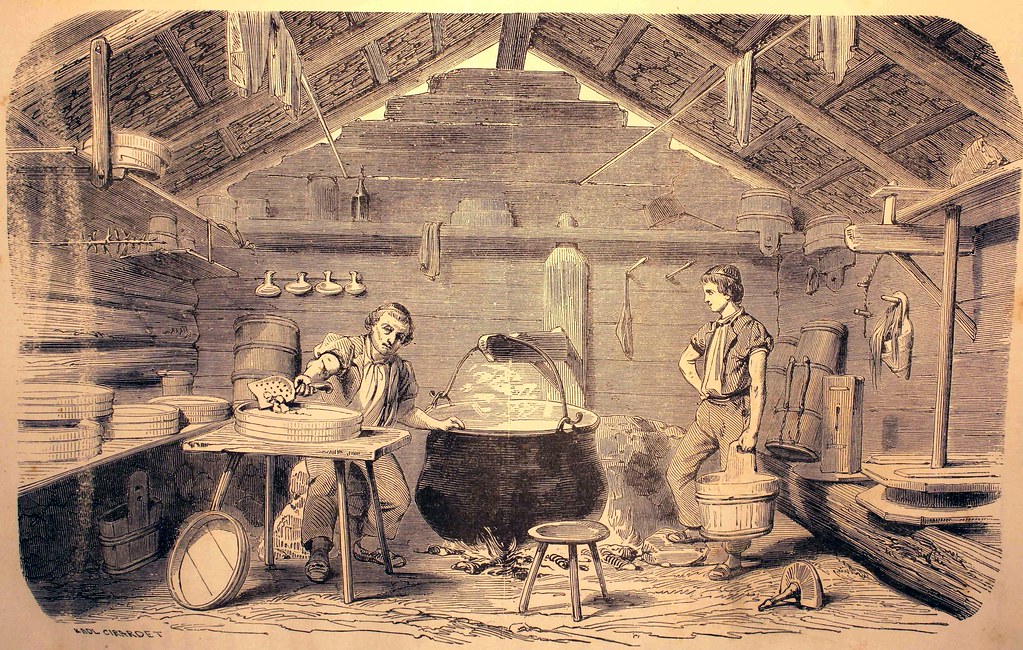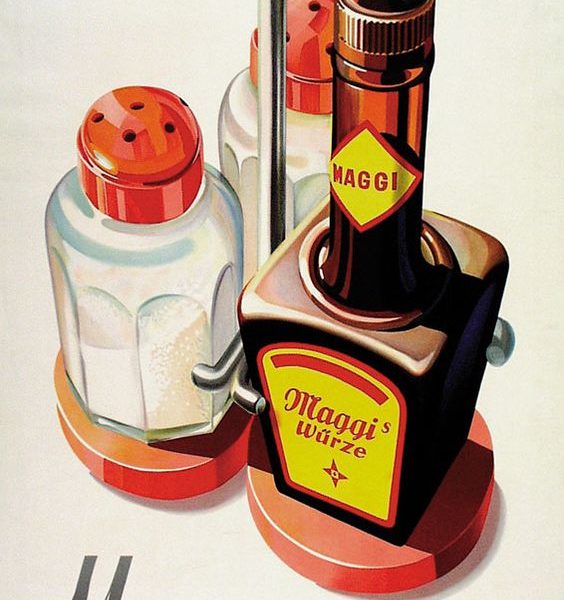The Heartwarming Tale of Swiss Cheese Fondue
Swiss cheese fondue, a quintessential dish that symbolizes the warmth of sharing and the rich culinary traditions of Switzerland, has journeyed through history to become a beloved global icon. Particularly celebrated in the canton of Fribourg with its signature « moitié-moitié » blend of Gruyère and Vacherin cheeses, fondue is more than a meal—it’s an experience. Let’s delve into the melty, cheesy world of Swiss Fondue, exploring its origins, cultural significance, and enduring charm.
The Origins: A Humble Beginning
The story of fondue begins in the Swiss Alps. Originally, it was a way to utilize aged cheese and bread during the cold winter months when fresh produce was scarce. The word « fondue » is derived from the French verb « fondre, » which means « to melt, » a nod to the dish’s French-speaking region of origin.
The earliest known recipe for cheese fondue dates back to a 1699 book published in Zurich, where it was described as a mixture of cheese melted with wine. The manuscript edited by Albert Hauser titled « To Cook Cheese with Wine » described a recipe akin to today’s cheese fondue.
The current version of cheese fondue was first outlined in a cookbook from the Zurich Home Economics School in 1885. Fondue in its modern form, involving cheese and wine, predates 1885 and does not originate from alpine traditions but rather urban ones.

The Kappeler milk soup 1869 – Albert Anker : The Kappel milk soup is a Swiss legend symbolizing the spirit of Swiss neutrality. It’s part of Switzerland’s founding myths. On June 8, 1529, the canton of Zurich declared war on five Catholic cantons. Protestant armies marched to the village of Kappel, marking the border between Zurich and Zug. During the first of the « Kappel Wars » (with no actual battle), as generals negotiated a peaceful solution, soldiers from both sides placed a cauldron of milk on the line dividing them, dipping pieces of bread. Protestants and Catholics shared a fraternal meal around the soup, teasing each other by tapping soldiers who crossed the boundary. Perhaps, this is the origin of Swiss fondue? Source : https://de.wikipedia.org/wiki/Kappeler_Milchsuppe
The origin of fondue is a subject of culinary controversy, with both Switzerland and France staking their claims.
France’s claim to fondue is less about a specific dish and more about the concept of melting cheese. The French region of Savoy, neighboring Switzerland, is known for its rich cheese-making traditions and shares many cultural and culinary practices with its Alpine neighbors.
The Rise of Fondue: From Necessity to National Dish
Fondue’s popularity soared in the 18th and 19th centuries, becoming a symbol of Swiss identity. The introduction of the « moitié-moitié » in Fribourg, blending the creamy Vacherin and the robust Gruyère, marked a significant moment in fondue’s culinary evolution. By the 1930s, the Swiss Cheese Union popularized it as a national symbol to increase cheese consumption, branding it as an emblem of Swiss heritage.

Making Gruyère cheese in a Swiss chalet or Alpine cheese dairy
Fondue in Modern Times: A Symbol of Unity
Today, fondue is more than just a traditional Swiss dish; it’s a culinary ritual that brings people together. The communal pot, known as « caquelon, » is placed at the center of the table, inviting friends and family to partake in a shared meal. This aspect of gathering and sharing makes fondue a favored dish for social occasions, reflecting the Swiss values of community and hospitality.
Deeper Dives into Swiss Cheese Fondue
The Cheese: The Heart of Fondue
The choice of cheese is crucial in defining the fondue’s flavor and texture. The classic « moitié-moitié » fondue features Gruyère for its slightly sweet and nutty flavor and Vacherin Fribourgeois for its creaminess. Each region in Switzerland boasts its own variations, incorporating local cheeses and sometimes adding accents like mushrooms, tomatoes, or peppers.
The Wine and Seasonings: Flavorful Accents
Typically, a dry white wine (Fendant) is used in the fondue mix to balance the richness of the cheese and aid in melting. The wine’s acidity helps keep the cheese emulsified and smooth. A dash of garlic, nutmeg, pepper, or kirsch (cherry brandy) is often added to enhance the fondue’s flavor, creating a complex and inviting aroma.
The Ritual: More Than Just Eating
Fondue is served with long-stemmed forks used to dip pieces of bread into the cheese. The communal aspect of everyone eating from the same pot fosters a sense of unity and camaraderie. There’s even a playful tradition where if someone drops their bread in the pot, they have to perform a task or face a small penalty, adding a humorous twist to the meal.
Summary Table
| Aspect | Description |
|---|---|
| Origin | Swiss Alps, utilizing aged cheese and bread |
| Significance | Symbol of Swiss identity and unity |
| Cheese Blend | Gruyère and Vacherin (Moitié-moitié) |
| Accompaniments | Bread cubes or potatoes, occasionally vegetables or meats |
| Unique Traditions | Communal eating, playful penalties for dropped bread |
Recommendations for Preparing and Enjoying Fondue
Preparing the Fondue:
- Choose Quality Cheese: Opt for high-quality Gruyère and Vacherin or other recommended varieties for the best flavor and texture.There are various ways to customize your fondue, making it a versatile dish adaptable to many tastes. The moitié-moitié fondue, a mix of half Gruyère and half Vacherin, serves as a popular base for numerous variations: whether you prefer an exotic, rustic, or spicy twist. The most well-known variant is the tomato fondue. Additionally, regional preferences in Switzerland lead to variations favoring local cheeses:
– Fribourg: 100% Vacherin Fribourgeois
– Appenzell: 100% Appenzeller
– Neuchâtel: 50% Gruyère, 50% Emmental
– Suisse centrale: 1/3 Gruyère, 1/3 Emmental, 1/3 Sbrinz
– Glaris: 2/3 Appenzeller, 1/3 Gruyère, and a bit of Schabziger
– Valais: 50% Gruyère, 25% Vacherin, 25% Raclette AOC
– Bern: 50% Emmental, 50% Comté
– Suisse orientale: 50% Appenzeller, 50% Tilsit, with cider instead of white wine. Each variant brings its unique flavor and character, reflecting the rich cheese-making traditions and regional tastes of Switzerland. - Grate the Cheese: Grate the cheese for quicker, more even melting. Room temperature cheese melts more smoothly.
- Stir Constantly: Once the cheese is added, stir continuously in a « figure eight » pattern to prevent clumping and ensure a smooth texture.
- Mind the Wine: Use a good dry white swiss wine (like Fendant) that complements the cheese. The wine not only adds flavor but helps keep the cheese smooth.
- Garlic It Up: Rub the fondue pot with a cut garlic clove for an extra layer of flavor.
- Control the Heat: Keep the heat moderate to prevent the cheese from scorching. If using a traditional fondue set, monitor the burner regularly.
Enjoying the Fondue:
- Dipping Delights: Classic fondue is enjoyed with cubes of bread. You can also try vegetables like broccoli, baby potatoes, or apples for dipping.
- Communal Rules: Dip only once per bite and twirl to avoid dripping. If your bread falls into the pot, you might follow a playful tradition or penalty!
- Keep It Stirring: Occasionally stir the pot to prevent the cheese at the bottom from hardening or burning.
- The Crispy Relic: At the end of the meal, you’ll find a thin crust of toasted cheese at the bottom of the pot called « la religieuse. » It’s a delicacy for many!
- Pairing Beverages: Traditionally, fondue is paired with the same white wine used in cooking or warm tea to aid digestion. It is best to opt for a mint herbal tea. Avoiding water or cold drinks is believed to help with digestion.
- Pacing Yourself: Fondue is rich and filling. Enjoy it slowly to savor the flavor.
Switzerland’s most exclusive fondue options
When it comes to « Ultimate Swiss Fondue Journeys » a variety of luxury hotels have elevated the cheese indulgence to a whole new level. These establishments offer unique dining experiences, whether it’s in their secluded chalet, atop a rooftop, or on a terrace with breathtaking views. Each setting is designed to provide an unforgettable fondue experience that is sure to captivate every guest’s heart.
52 Sizzling Swiss Fondue Recipes
Delight your friends and family with an inventive and scrumptious Swiss cheese fondue! Present them with a variety of options, from a tangy goat cheese base to a classic ‘moitié-moitié’ enhanced with whole grain mustard, or a bold combination of bell pepper and grappa for a new taste adventure. This book offers 52 imaginative and delicious recipes, including Spicy Fondue with Chorizo, Fondue with Eggplant Caviar, invigorating Power Fondue with Homemade Green Pesto, Herbal Fondue with Nettles, a balanced duo of Sheep’s Cheese and Tomatoes Fondue, gently spiced Fondue with Mild Curry, and many others to explore and enjoy.
Conclusion
Swiss cheese fondue is a testament to Switzerland‘s culinary ingenuity and its culture of togetherness. From its humble beginnings as a hearty meal for Alpine herders to its status as a national treasure and a symbol of unity, fondue continues to warm hearts and bring people together. Whether enjoyed in a cozy mountain chalet or a bustling city restaurant, the fondue pot remains an inviting beacon of Swiss hospitality.
Fondue
PROS
- Promotes Social Interaction: Encourages communal dining and conversation.
- Versatile: Adaptable to different tastes with various cheese and additions.
- Rich Cultural Heritage: Carries centuries of Swiss traditions and innovations.
- Comfort Food: Offers a warm, satisfying meal, especially in cold weather.
- Simple yet Elegant: Easy to prepare with an air of rustic sophistication.
CONS
- High in Calories: Quite rich and indulgent for those watching their diet.
- Requires Specific Equipment: Needs a fondue pot and special forks.
- Not for the Lactose Intolerant: Centrally features cheese and often cream.
- Risk of Separation: Can curdle or separate if not prepared carefully.





